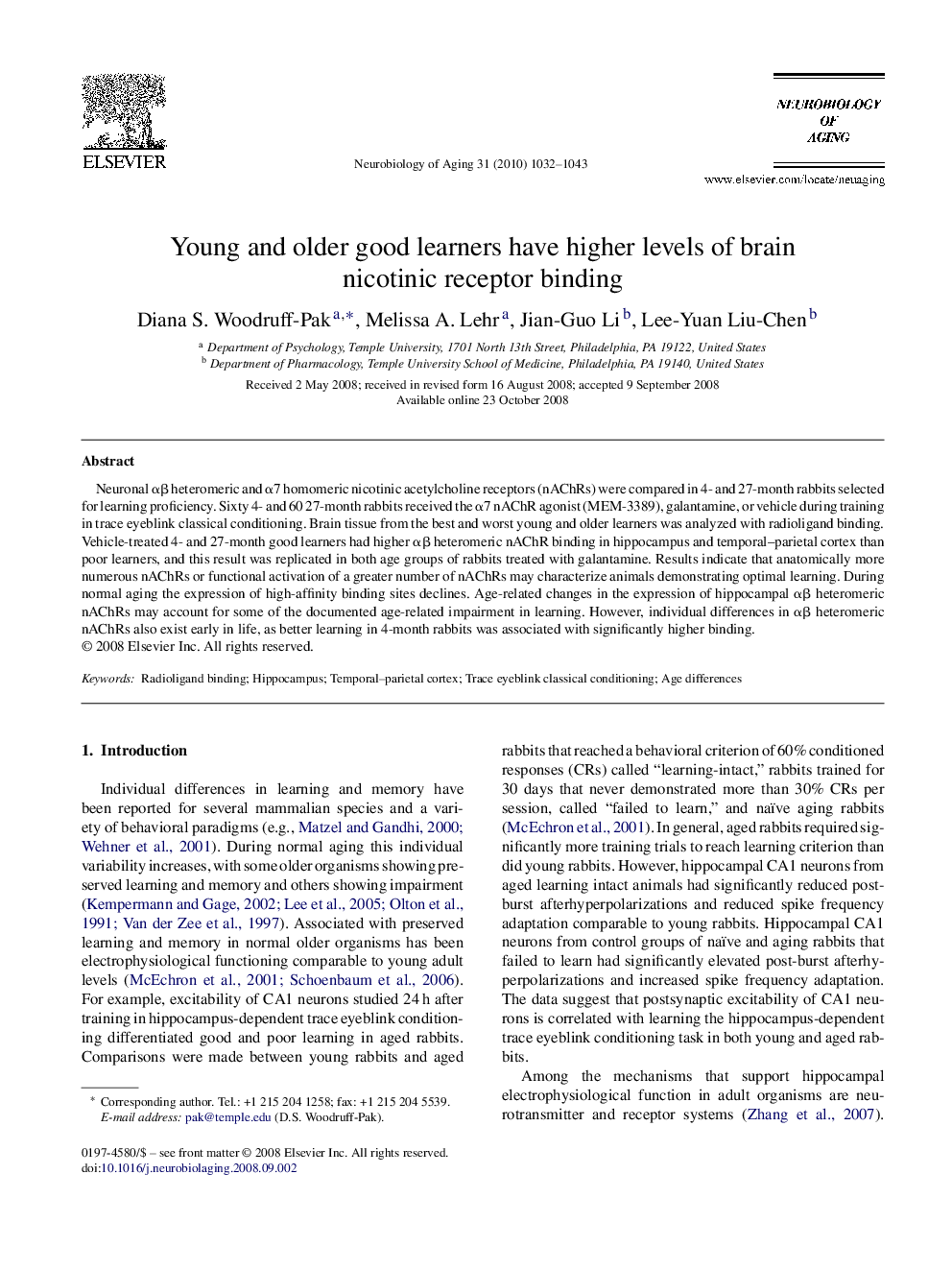| Article ID | Journal | Published Year | Pages | File Type |
|---|---|---|---|---|
| 6810637 | Neurobiology of Aging | 2010 | 12 Pages |
Abstract
Neuronal αβ heteromeric and α7 homomeric nicotinic acetylcholine receptors (nAChRs) were compared in 4- and 27-month rabbits selected for learning proficiency. Sixty 4- and 60 27-month rabbits received the α7 nAChR agonist (MEM-3389), galantamine, or vehicle during training in trace eyeblink classical conditioning. Brain tissue from the best and worst young and older learners was analyzed with radioligand binding. Vehicle-treated 4- and 27-month good learners had higher αβ heteromeric nAChR binding in hippocampus and temporal-parietal cortex than poor learners, and this result was replicated in both age groups of rabbits treated with galantamine. Results indicate that anatomically more numerous nAChRs or functional activation of a greater number of nAChRs may characterize animals demonstrating optimal learning. During normal aging the expression of high-affinity binding sites declines. Age-related changes in the expression of hippocampal αβ heteromeric nAChRs may account for some of the documented age-related impairment in learning. However, individual differences in αβ heteromeric nAChRs also exist early in life, as better learning in 4-month rabbits was associated with significantly higher binding.
Related Topics
Life Sciences
Biochemistry, Genetics and Molecular Biology
Ageing
Authors
Diana S. Woodruff-Pak, Melissa A. Lehr, Jian-Guo Li, Lee-Yuan Liu-Chen,
